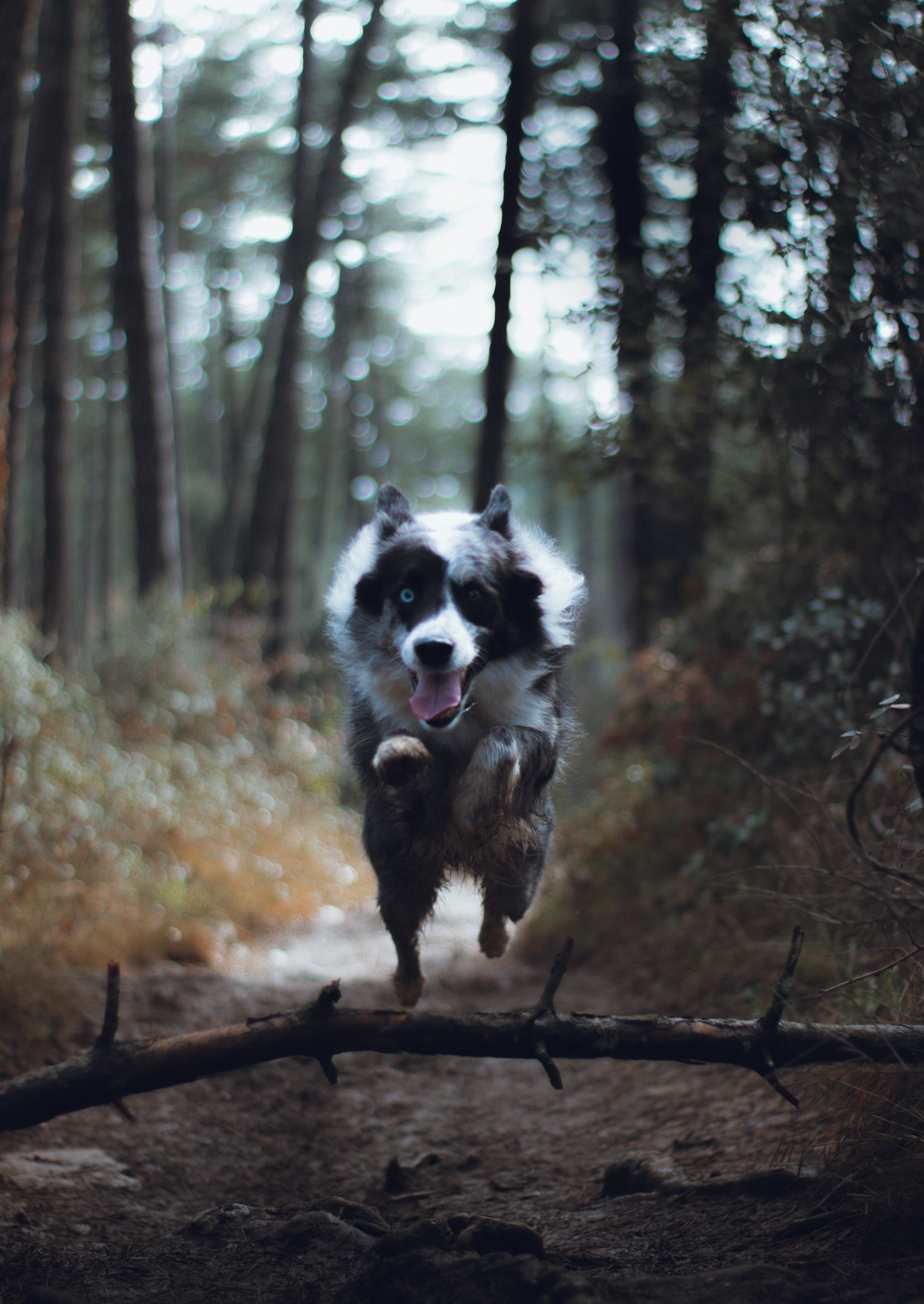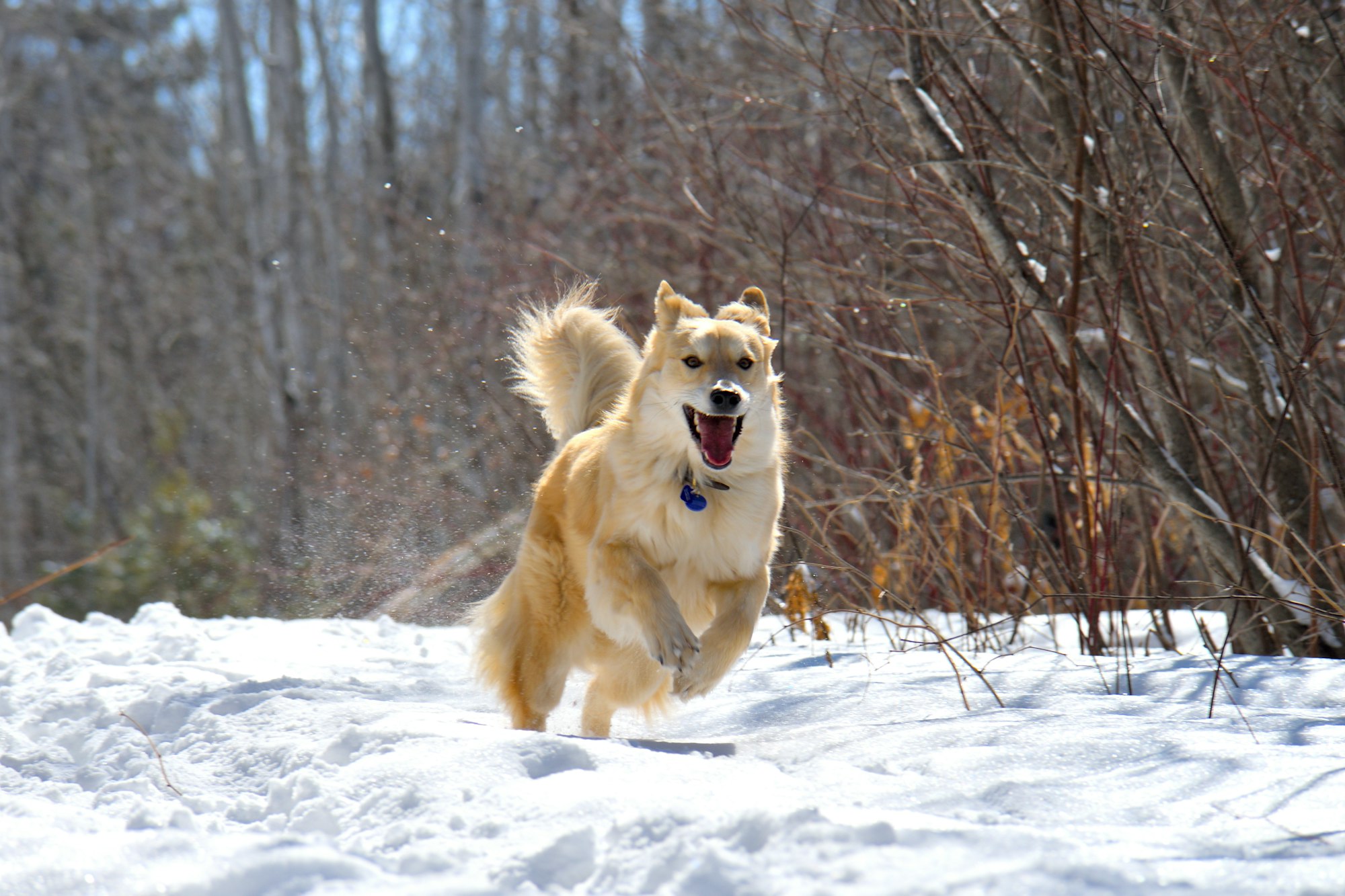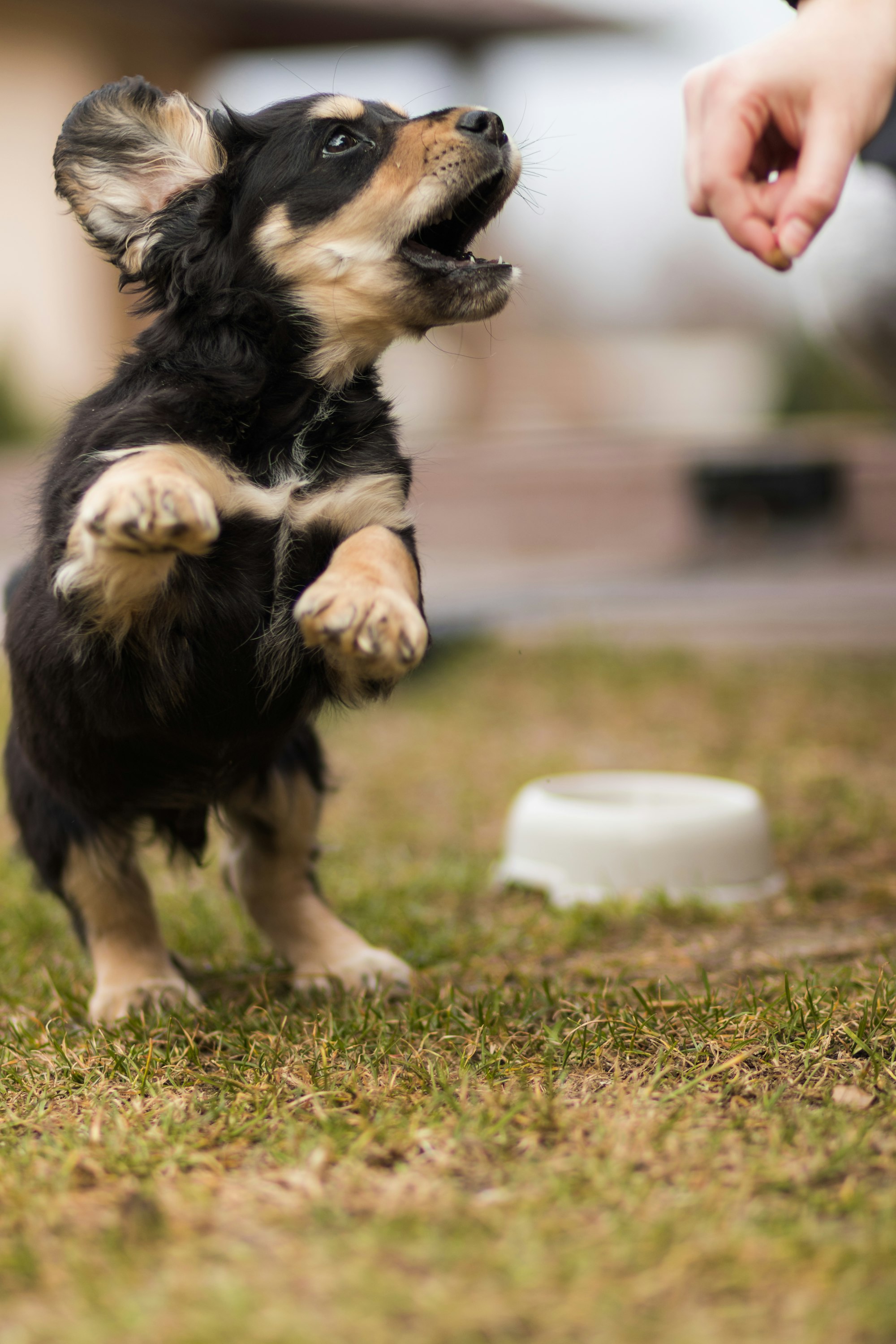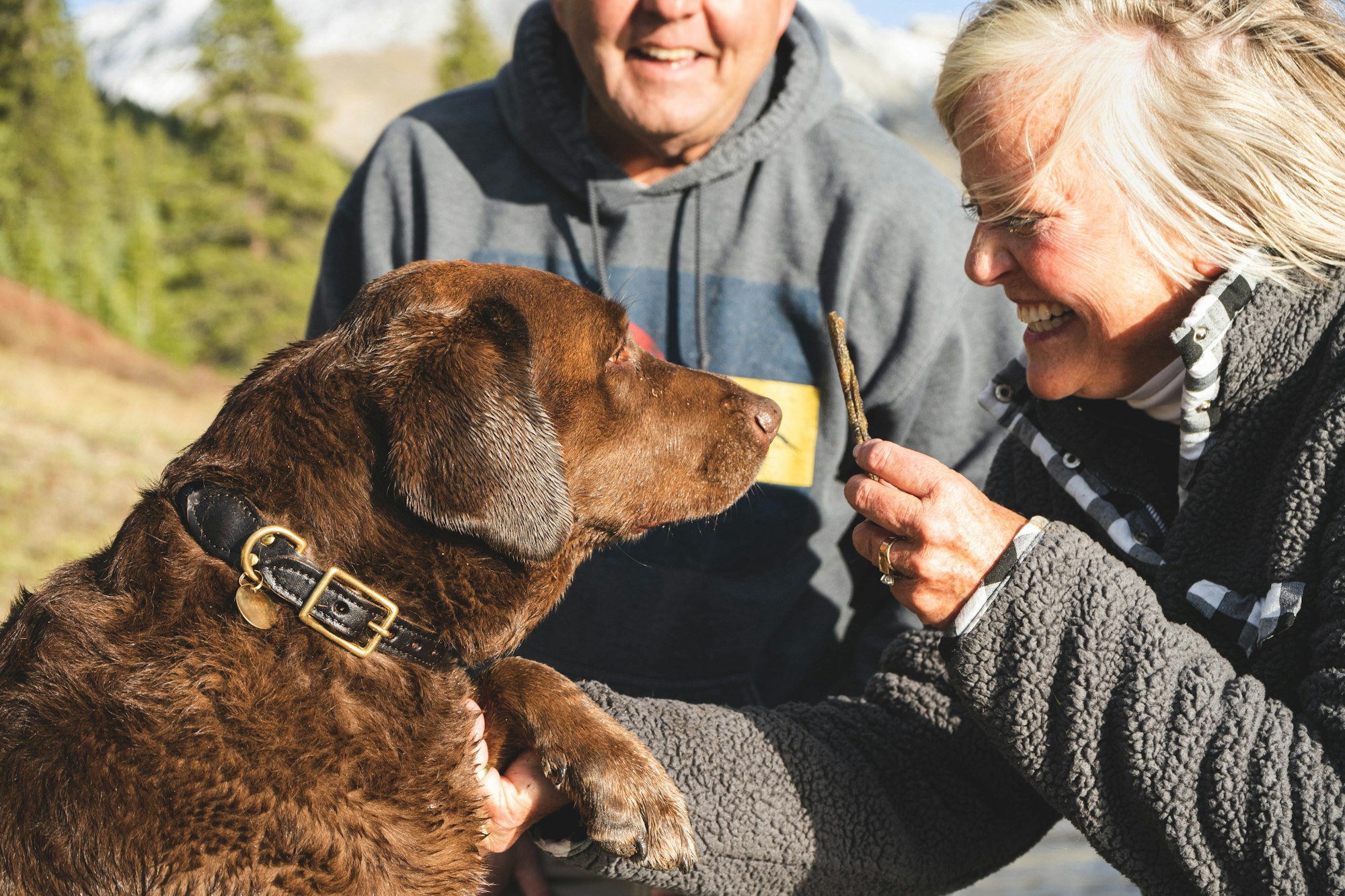Dogs are loving and playful animals, but sometimes their exuberance can lead to unwanted behavior, such as jumping on people. While it may seem harmless at first, a jumping dog can become a nuisance and even pose a safety risk. Here, we will explore effective strategies and training tips to help you stop your dog from jumping on people.
Understanding the Reasons Behind Jumping Behavior

To effectively address and stop your dog from jumping on people, it's critical to understand the reasons behind this behavior. Here are some common motivations for jumping:
1. Excitement and greetings: Dogs often jump as a way of expressing excitement and greeting people. Jumping allows them to get closer to the person's face and receive attention.
2. Seeking attention: Dogs may jump on people to get their attention. If they have learned that jumping results in people engaging with them, they may continue the behavior.
3. Eager playfulness: Some dogs jump during playtime as a form of interaction. They may be enthusiastic and use jumping as a way to initiate play.
4. Establishing dominance: In certain cases, jumping can be a sign of a dog trying to establish dominance over a person. This behavior is more common in dogs with assertive personalities.
5. Lack of training: Dogs may jump on people simply because they have not been taught appropriate greeting behaviors. Without proper training and guidance, they may resort to jumping as their default way of interacting with humans.
Understanding these underlying reasons can help you tailor your training approach and address the root cause of the behavior. By targeting the specific motivation behind your dog's jumping, you can implement effective training techniques to modify their behavior.
Setting Clear Boundaries and Rules

To effectively stop your dog from jumping on people, it's crucial to establish clear boundaries and rules. This will help your dog understand what is expected of them and what behavior is acceptable. Here are some steps you can take:
1. Establish no-jumping zones: Identify specific areas or situations where jumping is not allowed, such as when entering the house or when guests arrive. Communicate these areas to your dog and enforce the rule consistently.
2. Use verbal commands: Teach your dog a command like "off" or "down" to signal that jumping is not permitted. Use the order command consistently and reward your dog when they respond appropriately.
3. Encourage a sit-stay behavior: Train your dog to sit and stay when greeting people. This teaches them an alternative, polite behavior to jumping. Reinforce and reward this behavior consistently.
4. Create a consistent routine: Dogs thrive on routine and predictability. Establish a routine for greetings that involves calm interactions and rewards for good behavior. This consistency will help your dog understand what is expected of them.
Consistency is Key
Consistency is crucial when training your dog to stop jumping. Dogs learn through repetition and reinforcement, so it's crucial to maintain consistency in your training approach. Here's how you can achieve consistency:
1. Involve all family members: Ensure that everyone in your household follows the same rules and training methods. Consistency across all family members will prevent confusion for your dog and reinforce the desired behavior.
2. Communicate with visitors: Inform your guests about your dog's training and request their cooperation in not encouraging jumping. Ask them to follow the established rules and reinforce the alternative behavior, such as a sit-stay.
3. Reward good behavior: Consistently reward your dog for appropriate behavior. When your dog remains calm and refrains from jumping, provide verbal praise, treats, or affection as a positive reinforcement. This will encourage them to continue the desired behavior.
4. Redirect and reinforce: If your dog starts to jump, redirect their attention to an alternative behavior, such as sitting or offering a paw. Reward and reinforce this behavior immediately. Consistently redirecting their energy will help them understand that jumping is not the desired response.
Remember, consistency and clear communication are key in teaching your dog to stop jumping on people. By setting boundaries, using verbal commands, encouraging alternative behaviors, and maintaining consistency in your training approach, you can effectively address this behavior and ensure a polite and well-behaved canine companion.
Positive Reinforcement Training

Using positive reinforcement is a highly effective training method to stop your dog from jumping on people. It focuses on rewarding desired behaviors and reinforcing them positively. Here's how you can implement positive reinforcement training:
1. Reward calm behavior: When your dog remains calm and refrains from jumping, immediately reward them with treats, verbal praise, or affection. This positive reinforcement helps them associate calmness with positive outcomes.
2. Timing is crucial: Ensure that you reward your dog immediately after they exhibit the desired behavior. This helps them understand what they are being rewarded for. Delayed rewards may confuse your dog and make it harder for them to associate the reward with the specific behavior.
3. Consistency in rewards: Be consistent in rewarding your dog for not jumping. Every time they greet someone calmly without jumping, provide positive reinforcement. This consistency helps reinforce the desired behavior and encourages them to continue it.
4. Use high-value rewards: Find out what treats or rewards your dog finds most enticing. Use these high-value rewards specifically for training purposes. It could be small pieces of their favorite treat or a special toy. By using high-value rewards, you increase the motivation for your dog to exhibit the desired behavior.
Redirecting Attention
Redirecting your dog's attention is an effective technique to prevent them from jumping on people. Here's how you can redirect their attention:
1. Anticipate triggers: Identify situations or stimuli that often lead to jumping behavior. It could be when someone enters the house or during exciting play sessions. By recognizing these triggers, you can be proactive in redirecting your dog's attention before they have a chance to jump.
2. Teach an alternative behavior: Train your dog to perform an alternative behavior, such as sitting or offering a paw, when they feel excited or eager to jump. Whenever you anticipate jumping, give the command for the alternative behavior and reward them when they follow through. This redirects their attention and provides an acceptable behavior to replace jumping.
3. Distract with toys or treats: Keep your dog engaged and distracted during situations where they may be prone to jumping. Offer them a toy or treat that captures their attention and redirects their focus away from jumping on people. This helps them associate the presence of guests or exciting situations with positive experiences and alternative behaviors.
Teaching Alternative Greetings

Teaching your dog alternative greetings is an essential part of preventing jumping behavior. Here are some steps to teach alternative greetings:
1. Train the "sit" command: Teach your dog to sit on command. Practice this command regularly in various environments and reward them for sitting calmly. This becomes the foundation for alternative greetings.
2. Use the "sit" command during greetings: When someone approaches, instruct your dog to sit. Encourage the person to interact with your dog only when they are sitting calmly. This reinforces the idea that sitting is the appropriate behavior for greeting.
3. Reward alternative greetings: Whenever your dog offers an alternative greeting, such as sitting or offering a paw, reward them with treats, praise, or affection. This positive reinforcement reinforces the desired behavior and encourages them to continue politely greeting people.
Using Visual Cues and Commands
Visual cues and commands can be effective tools in training your dog to stop jumping on people. By incorporating visual signals and clear commands, you can communicate your expectations and redirect your dog's behavior. Here's how to utilize visual cues and commands:
1. Hand signals: Pair specific hand signals with verbal commands to provide clear instructions to your dog. For example, use a flat palm facing downwards as a visual cue for the "down" command. Practice these hand signals consistently during training sessions.
2. Consistent body language: Dogs are observant of body language. Maintain a calm and assertive posture when interacting with your dog. Use open body language to signal relaxation and encourage your dog to mirror your calmness.
3. Positive tone of voice: Use a firm and positive tone of voice when giving commands. Dogs respond well to clear and confident communication. Maintain consistency in your voice tone to help your dog understand your expectations.
Avoiding Physical Punishment
It is essential to avoid using physical punishment when training your dog to stop jumping on people. Physical punishment can lead to fear, separation anxiety, and aggressive behavior in dogs. Instead, focus on positive reinforcement and redirection techniques. Here's why avoiding physical punishment is crucial:
1. Build trust and positive association: Dogs thrive in an environment of trust and positive association. Punishment erodes trust and can create a negative association with training. Positive reinforcement techniques, on the other hand, build a strong bond and motivate your dog to learn and behave.
2. Promote a safe and loving environment: Physical punishment can harm your dog physically and emotionally. Creating a safe and loving environment is essential for your dog's well-being. Positive training methods help foster a positive and healthy relationship with your pet.
3. Effective alternatives: Positive reinforcement techniques, redirection, and consistent training methods are highly effective in teaching your dog to stop jumping. These methods focus on rewarding desired behaviors and teaching alternative greetings, resulting in long-term behavior change.
Seeking Professional Help

If you are facing challenges in stopping your good family dog from jumping on people despite your best efforts, seeking professional help is a wise decision. Professional dog trainers or behaviorists can provide expert guidance tailored to your dog's specific needs. Here's why professional assistance can be beneficial:
1. Specialized knowledge and experience: Professional trainers and behaviorists have in-depth knowledge and experience in addressing various behavioral issues in dogs. They can assess your dog's specific situation and provide targeted solutions.
2. Individualized training plans: Professionals can develop customized training plans based on your dog's temperament, breed, and specific jumping behaviors. These plans may include specific exercises, techniques, and strategies to address the issue effectively.
3. Ongoing support and guidance: Professional trainers can provide ongoing support and guidance throughout the training process. They can answer your questions, provide feedback, and help you navigate any challenges that arise.
Conclusion
Stopping your dog from jumping on people requires patience, consistency, and the use of effective training techniques. By implementing positive reinforcement, redirecting attention, teaching alternative greetings, using visual cues and commands, avoiding physical punishment, and seeking professional help when needed, you can successfully address this behavior.
Establishing clear boundaries and rules, such as designated no-jumping zones, helps your dog understand what is expected of them. Using verbal commands, like "off" or "down," and encouraging a sit-stay behavior provides alternative greetings that are more polite and controlled.
Consistency is key throughout the training process. Involve all family members in following the established rules and training methods. Communicate with visitors to ensure they support the training and reinforce the desired behavior. Rewarding good behavior, redirecting attention, and consistently reinforcing alternative behaviors create a positive learning environment for your dog.
Positive reinforcement training is highly effective. Rewarding calm behavior and timing the rewards appropriately help your dog associate desirable actions with positive outcomes. Using high-value rewards and maintaining consistency in rewarding good behavior further reinforces the desired response. Redirecting your dog's attention is crucial in preventing jumping. Anticipate triggers, teach alternative behaviors, and distract them with puzzle toys or treats to redirect their focus away from jumping.
Visual cues and commands aid in dog communication. Incorporate hand signals and maintain consistent body language and a positive tone of voice to effectively convey your expectations. Avoid physical punishment, as it can have negative consequences on your dog's well-being and trust. Instead, focus on building a safe and loving environment using positive training methods.
If you encounter difficulties in training your dog to stop jumping despite your efforts, seeking professional help is a valuable option. Professional trainers and behaviorists possess specialized knowledge, can develop individualized training plans, and provide ongoing support throughout the process.
In conclusion, with the right approach, training, and techniques, you can successfully stop your dog from jumping on people. Remember to be patient, consistent, and kind throughout the training journey, and soon your dog will greet others politely and create positive interactions.
FAQs
Q1: How long does it take to stop a dog from jumping on people?
The time it takes to stop a dog from jumping on people can vary depending on the dog's age, temperament, and previous training. Consistency and positive reinforcement are key factors in expediting the training process.
Q2: Can all dogs be trained to stop jumping?
Yes, all dogs can be trained to stop jumping. However, some breeds may require more time and patience due to their energy levels or predisposition to certain behaviors. With proper training and consistency, most dogs can learn alternative greetings.
Q3: Are there any breeds more prone to jumping behavior?
Certain breeds may be more prone to jumping behavior due to their high energy levels and enthusiasm. However, any dog can exhibit jumping behavior regardless of breed. Training techniques can help address this behavior in all breeds.
Q4: Should I punish my dog for jumping?
No, punishment is not recommended when addressing jumping behavior. Positive reinforcement and redirection techniques are more effective and promote a healthy and trusting relationship with your dog.
Q5: Can age affect a dog's ability to learn not to jump?
Age can affect a dog's ability to learn but doesn't necessarily determine their capacity to stop jumping. Dogs of all ages can be trained, although younger dogs may be more responsive to training methods. Patience and consistency are essential regardless of the dog's age.






